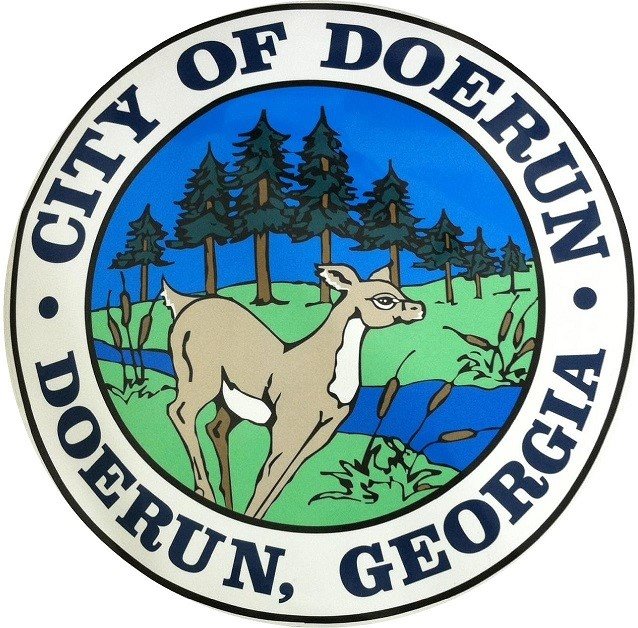Reputations of notorious Northeastern Oklahoma outlaws see rehabilitation
Published 3:00 pm Saturday, November 13, 2021

- Ned Christie poses with two handguns and a Winchester rifle.
TAHLEQUAH, Oklahoma – Northeastern Oklahoma residents and others in a multi-state region have long been interested in notorious outlaws, and the Cherokee County area has been home to many – each with a reputation of running from the law.
Infamous criminals such as Charles Arthur Floyd, better known as “Pretty Boy Floyd,” have connections to the area. The bank robber’s car was purportedly found near the base of Goat’s Bluff on the Illinois River after he was chased by the police. He gained widespread recognition in the 1930s and was at one point Public Enemy No. 1. Some say the car found in later years didn’t belong to Floyd, though.
While they are perhaps not as well-known as Floyd, the county has ties to other criminals and outlaws who ventured through the area. One such individual was Thomas “Kye” Carlilie, who was believed to have been involved in the robbery of a bank in Bixby in the 1930s.
“He was really infamous,” said Brad Agnew, Tahlequah historian. “There was a major, major manhunt for him. I think he was well liked in the area, but the shootout was major news and it involved a lot of people.”
Carlyle was considered to be the leader of a criminal gang that used the Cookson hills as its base of operation. He and five other men had been charged with kidnapping two Woodall school teachers a few days before the shooting of Suzie Sharp. Area lawmen were supposedly slow to respond to the murder of Sharp, because they were busy searching the Cookson area for the kidnappers.
For weeks, the kidnappers were able to escape the law with the help of area residents. But law enforcement soon learned that Bud McClain, a 28-year-old farmer, was going to assist some of the suspects, and they witnessed him return home with several men in his car on Sept. 16, 1932. With officials blocking nearby roads, one checkpoint had a vehicle approach at a high rate of speed and before the lawmen could seek shelter, two of them had been shot and eventually died. The driver, McClain, was killed at the scene.
While more than 100 law enforcement officials joined the search for the remaining criminals, they were unable to find them until former Cherokee County Sheriff Grover Bishop spotted Dick Carter, Carlile’s cousin, near Pettit with a bag of groceries. Evidence from the previous shooting indicated he had been assisting the outlaws, and he eventually revealed that Carlile and Troy Love were hiding out in a nearby farm.
At least 26 heavily-armed lawmen converged on the suspects’ position. Calls for the two men to surrender were met with gunfire, and at least two men were killed. Carlile and Love attempted an escape after running out of ammunition, but both were shot down, and one of the bloodiest periods in Cherokee County history ended.
A bad reputation can be hard to overcome. For one man in particular, his standing with the federal government would be his downfall. While considered an outlaw by many with a badge, Ned Christie is revered as a Cherokee patriot today.
The killing of Deputy U.S. Marshal Dan Maples set off one of the most famous manhunts and shoot-outs in history.
“There were about four or five suspects that were initially looked at,” said Catherine Gray, Cherokee Nation history and preservation officer. “Every one of them at one point had turned themselves in to Judge [Isaac] Parker at the Fort Smith court. Ned was never apprehended, so he’s the one that really becomes the sole suspect, because they’re all pointing their fingers at each other.”
After the shooting, Christie soon learned he was considered a suspect in Maples’ death, and a friend encouraged him to flee. After hearing that authorities had a warrant for his arrest, he left Tahlequah, but was reportedly willing to turn himself in if he was allowed to post bond so he could gather evidence to exonerate himself.
According to a report in the Daily Oklahoman, 31 years after the death of Maples, Richard Humphrey, a Cherokee freedman, said he witnessed the murder. In his account of what happened, he said he saw Bud Trainor remove the jacket from a sleeping Ned Christie down by the Town Branch Creek. He said Trainor then assassinated the marshal, before throwing the jacket back over Christie.
Gray said Humphrey was in fear of his life and therefore never came forward with the story.
The judge refused overtures from Christie’s attorneys, which is when the five-year manhunt for him began. Gray said many of the members of the Keetoowah Society helped shield Christie, and although the authorities knew where he was, they were never able to capture him.
“Marshals showed up all the time trying to capture him,” Gray said. “He shot at a few of them. I think one of them ended up losing an eye.”
Eventually, federal lawmen showed up to Christie’s hideout with a cannon and dynamite. After the cannon ended up exploding, all authorities had left was the dynamite and a carriage. Gray said they rolled the explosive-laden carriage up to Christie’s house, using it to catch the home on fire. That’s when he stepped out of the home and was killed by gunfire.
Gray said that while Christie may not have committed the crime, he was somewhat turned into an outlaw by the authorities – although he’s not considered to be one today.
“A lot of people revere him as one of our last great warriors that really stands up to the federal government. That’s really his legacy over here in the Cherokee Nation,” she said. “I think over the last decade or so, a lot of people are looking at it from that angle now. Because for at least a century, he was portrayed as this outlaw.“





